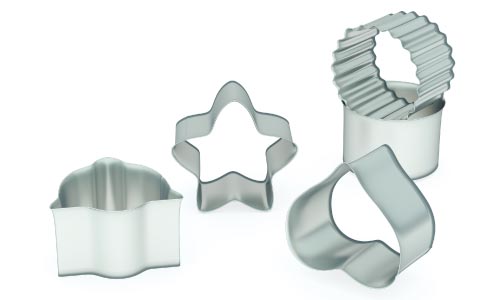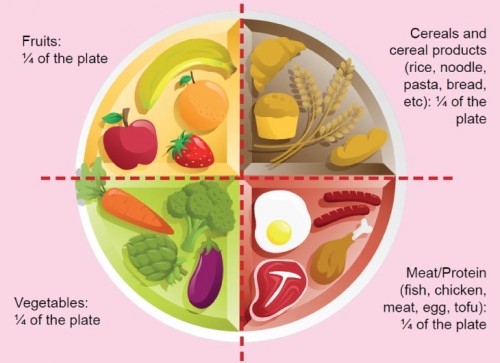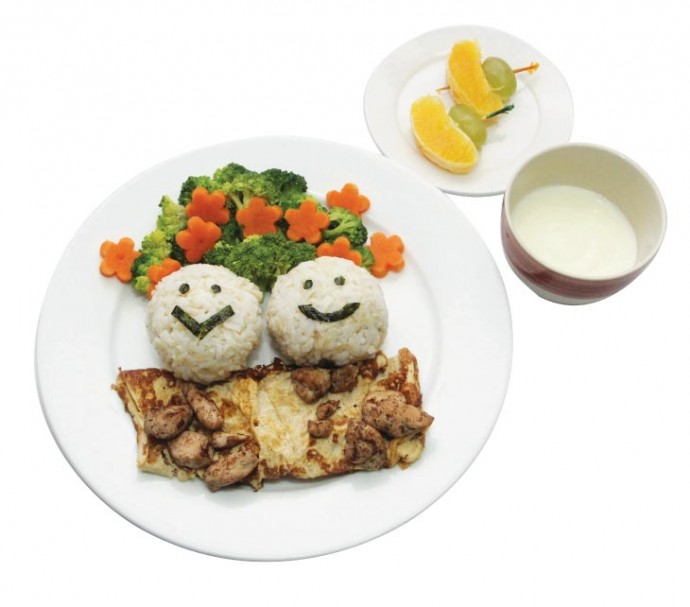Researchers at Cornell University found that kids choose their food based on how their food is being presented on their plate. What seems attractive to an adult does not warrant the same excitement in a child.
According to the study, children prefer greater diversity and averagely they prefer seven different items on their plate with six different colors. Comparatively, adults are happy with just three different colored items. Other factors include the placement of entrée and how the food is being organized.
How to make mealtimes more fun?
Below is an example on how to decorate your child’s meal. This dish in particular involves just 9 simple steps to help make your child enjoy their meals even more.
Step 1
Start with a simple sketch. Be fun and creative, this is where a good imagination comes in handy. It’s a chore only if you want it to be, so learn to enjoy the process.

Step 2
Cut the broccoli into bite sizes and cut them in half lengthwise prior to steaming them. Broccoli will be used as the trees, you can substitute it with other types of vegetables that your child likes, remember, ‘diversity’ is the name of the game.
Step 3
Playing with shapes are as important as playing with color, to keep things interesting on the plate and arouse your child’s senses, try an array of color-toshape combos. For example this dish will use a flower shaped dough cutter to give the carrots some shape before we steam them.
Step 4
You can shallow fry, scramble, boil or turn them sunny side up, kids love eggs! Here we’ll make a rectangle-shaped omelet, perfect to provide both vibrant golden colouration while adding protein to the dish.
Step 5
Cut the chicken breast into bite sizes and marinate with the seasoning of your preference and stir-fry, grill or steam them. You can’t oversell meat – it practically sells itself, so just make sure you’re providing the right amount and cooking it in a healthy way.
Step 6
Your child needs carbohydrate for energy. You can try a choice of bread, noodles or rice. So what we’re going to do is mould the cooked rice into a ball and make a face on it using pieces of pre-cut seaweeds. You can use whatever you think is appropriate, as long as it’s healthy and wholesome as well as fun and interesting.
Step 7
If your child needs something sweet to end a meal, try a fruit kebab. Use different types of fruits with different colors and assemble them together using a toothpick.
Step 8
Organize all the components of the dish that you’ve prepared on a plate according to the sketch made earlier. You can also use colorful decorative plates or food containers to add more effect.
Step 9
A milk-based dessert like pudding or yoghurt is perfect. Shape it to look like a car or an animal using a mould makes it even better.
What do you need to keep in the kitchen?
These are some essential items that can help you to decorate your child’s meals/plate:
- Sketch book
- Shaped paper punch
- Cookie/sandwich cutter in different shapes
- Moulds
- Skewer/Tooth pick

Tips from Ms Samantha Lee, Food Artist
These are some essential items that can help you to decorate your child’s meals/plate:
- Keep it simple. Vegetables and fruits should essentially be presented as it is. Children should recognize the food that they eat in its original form.
- Ask your child what she likes. Bring them for grocery shopping and get them involved in the kitchen. Eg. They can help to cut the carrots using the cookie cutter or punch the face features from the seaweed sheet.
- Basically all types of food can be decorated. All you need is a good imagination and proper planning.
- Always have a variety of colorful fruits and vegetables stocked in your refrigerator
Tips from from Dr Tee E Siong, President of Nutrition Society of Malaysia
While decorating meals, do ensure meals that you serve are balanced (consists of all the food groups from the Food Pyramid) and in moderate portions.
To know how much of each of the food groups to serve, simply imagine your plate has 4 sections. Arrange the food on the dish according to the portions shown below:

Remember to include milk or other dairy products in at least 2 of the main meals.
Note: Serve a variety of foods to your child to ensure he gets different nutrients from different foods to support his growth and development. Eg. If you have served fish for lunch, serve chicken for dinner; if he ate long beans for lunch, give him spinach for dinner.
An educational collaboration with Nutrition Society of Malaysia.







Comments